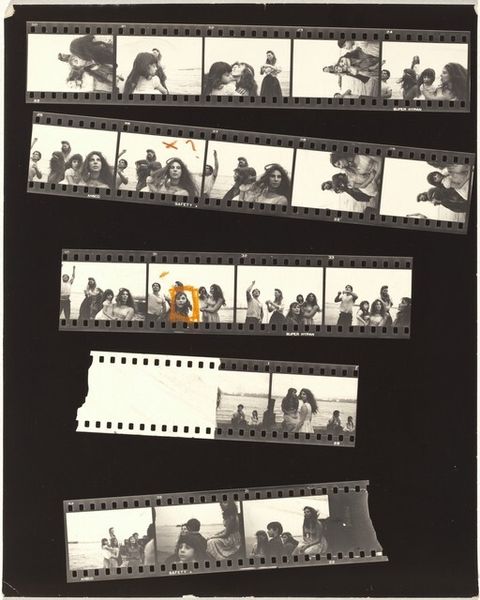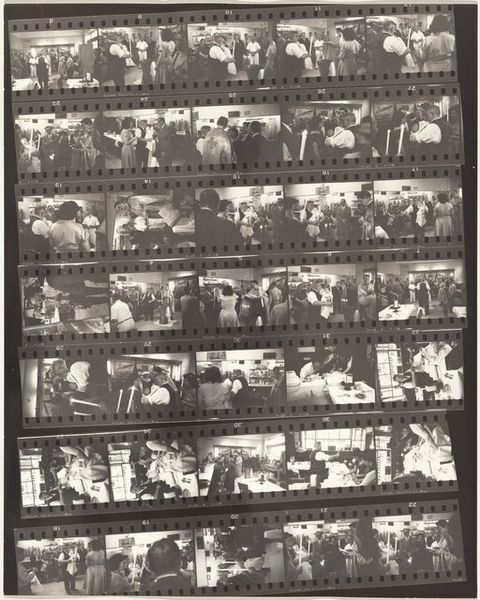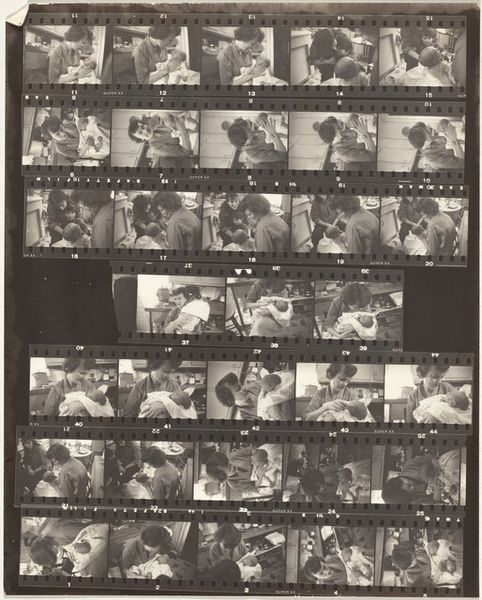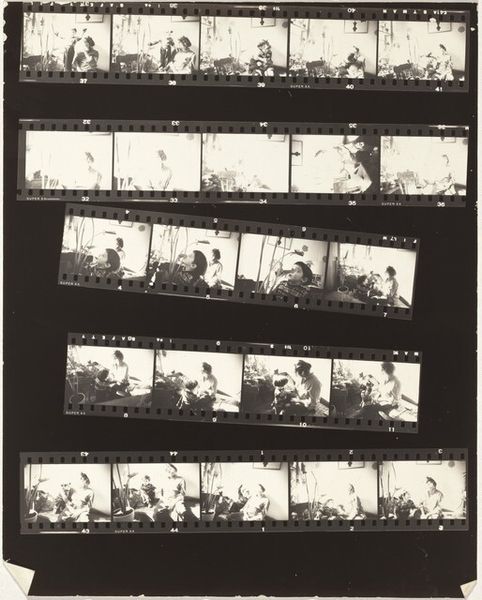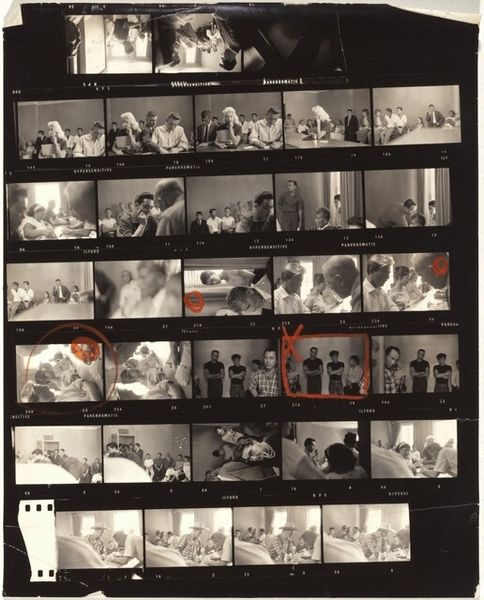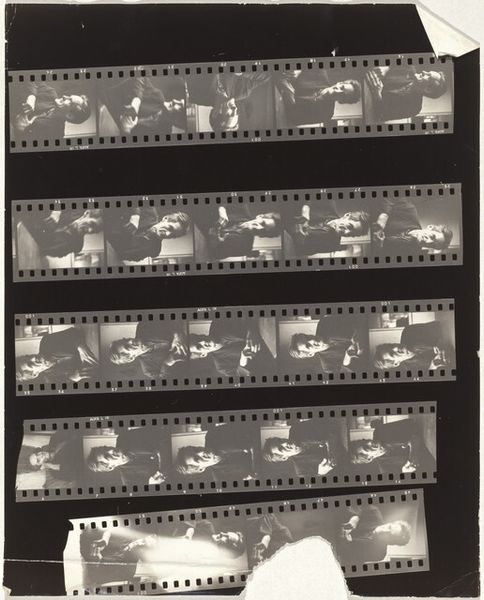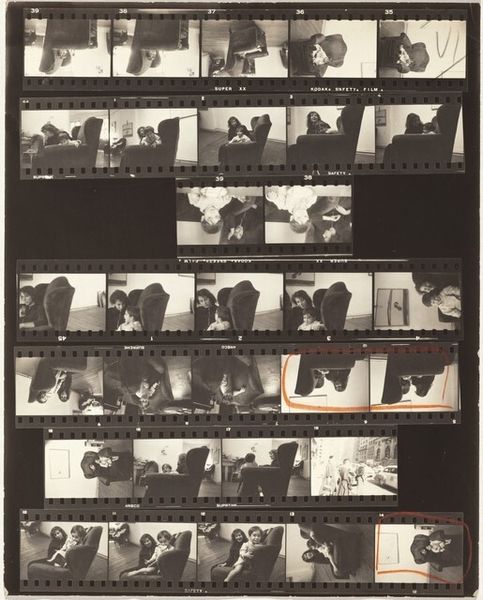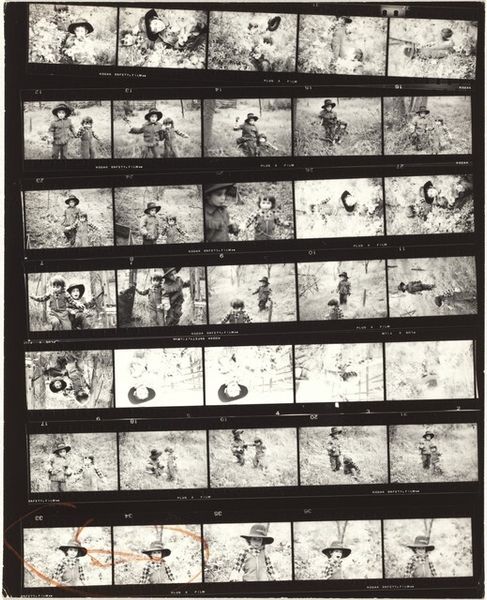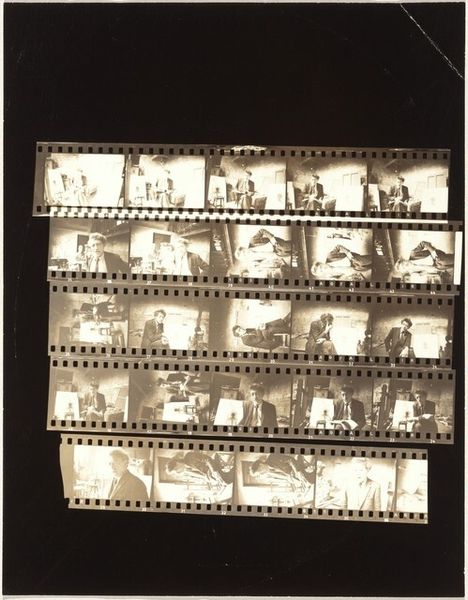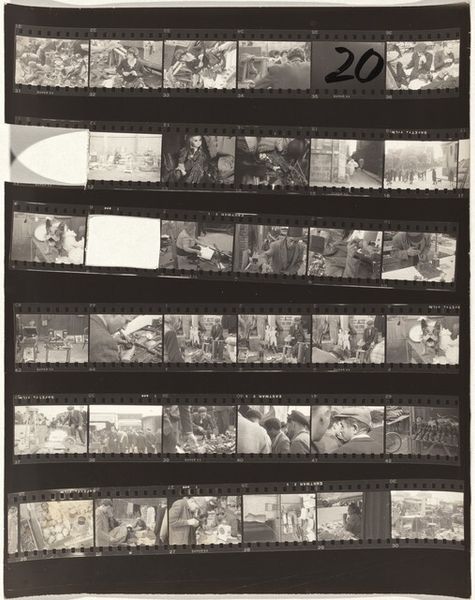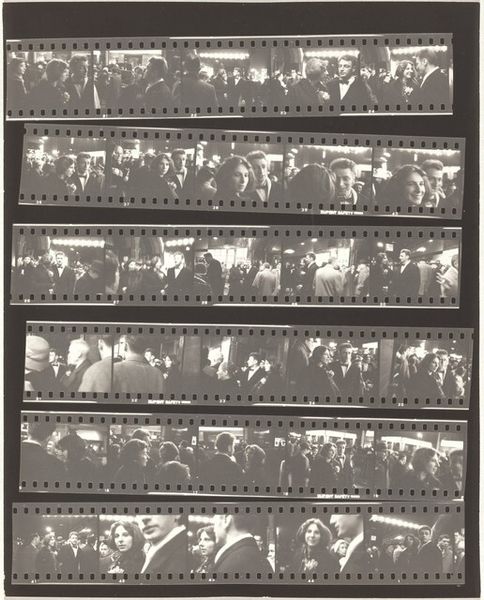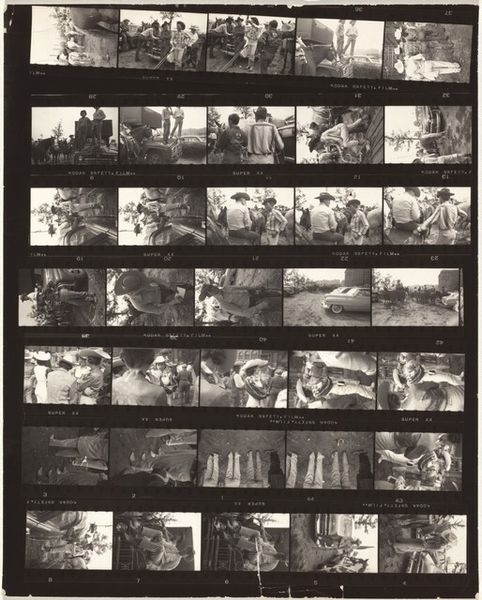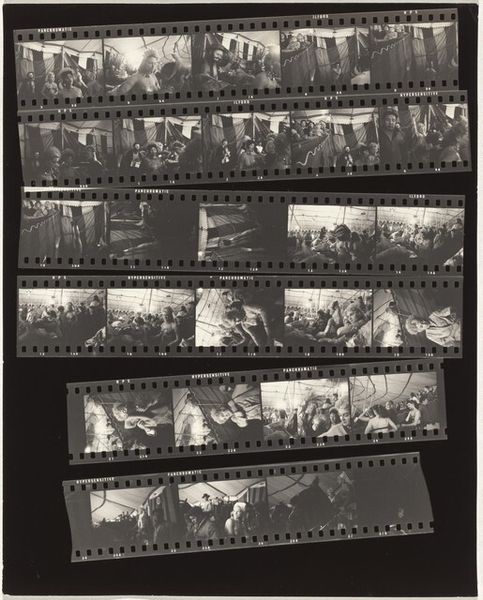
Dimensions: overall: 25.2 x 20.2 cm (9 15/16 x 7 15/16 in.)
Copyright: National Gallery of Art: CC0 1.0
Editor: This is Robert Frank's "Pablo and Andrea 4," a gelatin-silver print made between 1957 and 1958. It’s a collection of frames showing a group of young people, and it makes me think about the fleeting nature of youth. How do you interpret this work within its historical context? Curator: I see a potent visual document reflecting youth culture and shifting social norms. Frank was capturing a generation coming into its own during a period of considerable social upheaval and the burgeoning Civil Rights Movement. What stories do you think these faces tell us about the era? Editor: I notice they're diverse, and there's an apparent spontaneity, like unposed moments of joy. The grainy, high-contrast look feels very different from staged, polished family portraits of the time. Curator: Exactly! It's a conscious break from established portraiture, embracing realism and challenging conventional representations. Consider how Frank, as an outsider, might have viewed and portrayed American society. How does this relate to the themes of identity and representation in his broader body of work? Editor: I hadn’t thought about his outsider perspective. It really emphasizes the authenticity. Maybe the fragmentation and rawness speak to a search for a genuine American identity, distinct from the idealized versions. Curator: Precisely. He’s prompting us to question the dominant narratives of the time and explore the nuances of individual experience. Editor: This makes me consider Frank’s broader project – revealing what’s beneath the surface of 1950's America. Thanks for connecting the photo with these themes of representation. Curator: Absolutely. And it serves as a powerful reminder of art’s role in social commentary and change.
Comments
No comments
Be the first to comment and join the conversation on the ultimate creative platform.
